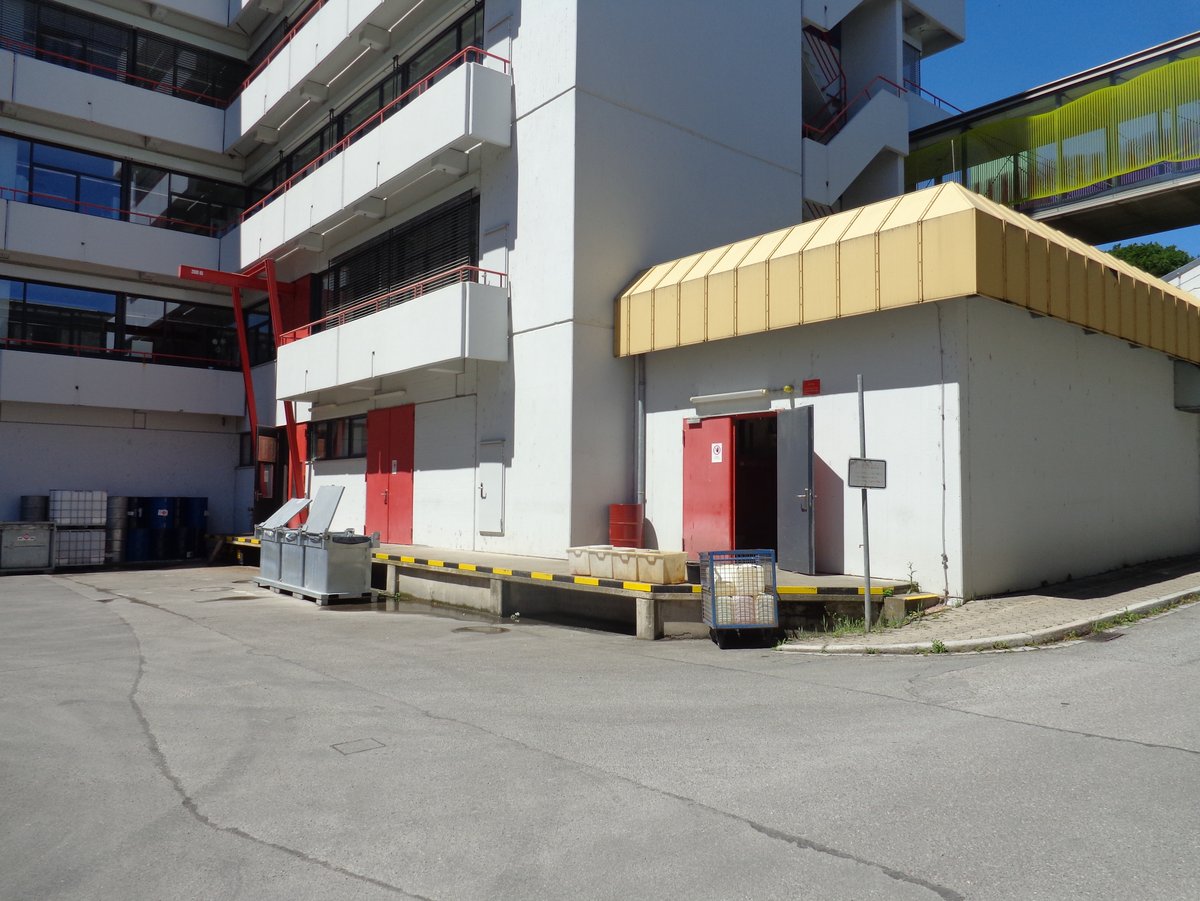Contaminated absorbing matter, cleaning cloths and wipes as well as plastic waste must be collected separately. This is for legal and financial reasons.
Please check carefully whether you are using the correct container for your waste.
Absorbing matter (contaminated)
Absorbing matter should only be disposed of as hazardous waste, if it was exposed to hazardous materials. Otherwise you may dispose of it together with your residual waste.
Absorbing matters includes:
- contaminated filter aids
- binding agents
- activated carbon
- silica gel
- diatomite
- cellulose
- aluminium oxide
- polyacrylamide gel
- gels polluted by ethidium bromide
- TLC (thin layer chromatography) strips
Absorbing matter of this kind should be collected in white plastic containers with screw-on lids and deposited at the “Sonderabfallsammelstelle” (hazardous materials collection point).
For silica gels and other kinds of waste prone to generating large quantities of dust, we recommend that you use paper bags or colourless, see-through plastic bags.
| Documentation: | none required |
| Declaration: | Absorbing matter *) |
*) one label each on the side and lid of the container
Cleaning cloths and wipes (contaminated)
Cleaning cloths and wipes that are contaminated with hazardous materials should be collected in white plastic barrels with screw-on lids and deposited at the “Sonderabfallsammelstelle” (hazardous waste collection point).
Empty packaging of disposable gloves and normal paper do not belong in those barrels.
| Documentation: | none required |
| Declaration: | Cleaning cloths and wipes *) |
*) one label each on the side and lid of the container
Plastic waste (contaminated)
Plastic waste should only be disposed of as hazardous waste if it was exposed to hazardous materials.
Plastic waste includes, amongst other things:
- plastic gloves
- Eppendorf safe-lock tubes
- plastic pipettes
- plastic cuvettes
- tubes
- plastic syringes
- cannulas in solid, sealable plastic containers
Contaminated plastic waste should be collected in white plastic barrels with screw-on lids and deposited at the “Sonderabfallsammelstelle” (hazardous waste collection point).
| Documentation: | none required |
| Declaration: | Plastic waste *) |
*) one label each on the side and lid of the container
Plastic containers (contaminated)
Plastic containers contaminated with hazardous materials should, if possible, be cleaned and disposed of as “Kunststoffe” (plastics) in the “Auspackraum” (central waste collection point) in M 541. Please remove or efface any hazardous materials labels or codes after cleaning the containers.
If you have tried but ultimately failed to clean them, you may simply empty and drop them at the “Sonderabfallsammelstelle”.
(see previous section Plastic waste contaminated)
Laboratory glass and glass packaging
Hard glass (laboratory glass) and soft glass (glass packaging) need to be collected separately for recycling.
Please rinse brown bottles that contained chemicals, let them dry and bring them without lid to the hazardous waste collection point (Sonderabfallannahme).
Hard glass includes:
- laboratory glass (round-bottom flask, Erlenmeyer flask, beakers, laboratory bottles, desiccators, filter flasks, funnels etc.) labelled “Schott/Duran”
- laboratory apparatuses manufactured in the glass blowing workshop (condensation traps, vacuum plants, coolers, distillers, Pasteur pipettes etc.)
- optical glass (lenses, prisms)
- window panes
Before dispensing hard glass contaminated with hazardous substances, you have to remove chemical residues and labels.
Please also rinse soft glass (glass packaging) and bring it to room M541, where glass (white, brown and green) is collected for recycling.
Soft glass includes:
- beverage bottles
- jars
- drinking glasses
| Documentation: | none required |
| Declaration: | Used glass |
Work materials contaminated with oil
Work materials contaminated with oil (e.g. oil-polluted gloves, tubes, wipes, paper tissues etc.) may be disposed together with plastics, cleaning cloths and wipes or absorbing matter.
| Documentation: | none required |
| Declaration: |
Paints, varnishes, resins, adhesives
Dried paints, varnishes, resins and adhesives that do not contain hazardous materials, such as heavy metal pigments, may be disposed of with your residual waste.
Non-hardened and liquid paints, varnishes and adhesives should be regarded as hazardous waste and disposed of at the “Sonderabfallsammelstelle” (hazardous waste collection point).
| Documentation: | Hazardous solids |
| Declaration: | Paints and varnishes *) |
*) You do not need to include any additional declarations with unopened paints, varnishes etc.
Waste containing mercury
Please keep the use of reagents and objects containing mercury to an absolute minimum!
Mercury and waste containing mercury must be collected and disposed of separately!
Mercury thermometers may be handed in to the “Sonderabfallsammelstelle” if they are kept in tightly sealed plastic containers. Elemental mercury (e.g. used in bubble counters or manometres) may be handed in to the “Sonderabfallsammelstelle” if it is stored in plastic containers that can be screwed shut. Please include information on potential sources of contamination.
| Documentation: | Hazardous solids |
| Declaration: | as described on the “Sicherheitsdatenblatt” (safety data sheet) |
Asbestos
At the University of Konstanz, asbestos waste, e.g. shingles, wall panelling, tiles, tubes and other fittings containing asbestos, is mainly produced during remodelling and renovation work.
This work is carried out by specialised contractors who package and dispose of any waste containing asbestos in accordance with the regulations.
The following laboratory objects may contain asbestos:
- Bunsen burner nets
- heating mantles
- gloves
- gaskets
Objects such as these must be sealed in dustproof plastic bags and handed in to the “Sonderabfallsammelstelle” (hazardous waste collection point).
Drying cabinets and similar appliances containing asbestos can be disposed of via the “Altgeräteannahme” (used equipment collection point) and put into interim storage in the “Sonderabfalllager” (hazardous waste storage).
| Documentation: | Contaminated equipment |
| Declaration: | Asbestos |

